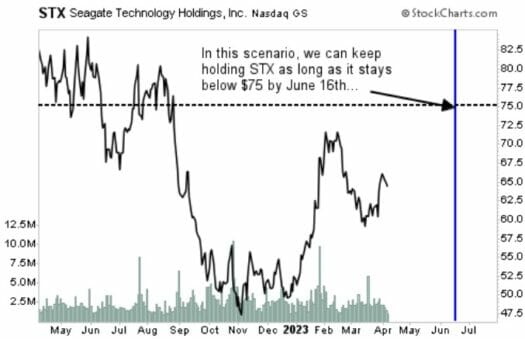Own A Stock That Doesn’t Pay A High Dividend? Here’s How To Double Your Income…
As most of you know, I spend the bulk of my time over at High-Yield Investing focused on income-paying securities. After all, it’s part of my job. But I’ve also cautioned against ignoring other securities, especially in sectors that are not traditionally known for paying dividends.
Take small/mid-cap stocks, for example. Or tech stocks, for that matter. Even in a conservative portfolio focused on income, it makes sense for diversification purposes. Plus, the growth potential is sometimes just too good to pass up.
With corporate balance sheets full of cash, I expect to see capital returns becoming more of a focus. But tech companies, for example, generally plow the lion’s share of their cash into expansion projects, new product development, and other growth-minded pursuits. That balance keeps yields in check (payouts of 1% to 2% are common).
But is there a way to harness the capital appreciation of this group while still pocketing more income? You bet…
An Easy Way To Boost Income
Today, I want to discuss how we can do that by using a simple, but effective strategy: selling covered call options. Don’t be scared by the terminology. It’s really quite easy to learn.
Let me explain using a former holding from our own High-Yield Investing portfolio: Seagate (NYSE: STX).
The storage device maker is currently trading around $65 per share and offers a respectable yield of about 4%, which is actually more than most tech stocks. Suppose I am bullish long-term, but think the stock might have trouble making any headway over the next few months.
One way to mitigate risk — and generate extra income at the same time — is by selling a covered call option. These contracts convey the right (but not the obligation) for one investor to purchase stock from another at a pre-designated price. In this case, there is a call option on STX expiring on June 16th with a strike price of $75.
The cost (or premium) is $1.00 per share. Since each contract involves 100 shares, this one would cost $100. But as the seller, I would collect that cash from the buyer upfront. In turn, they have the right to buy 100 shares of STX from me at $75 per share.
If STX fails to reach that level, then the contract expires. I will happily pocket an extra $100 in income for my trouble and move on. That might not sound like much. But by itself, $1.00 on a $65 stock represents an income stream of 1.5%. But that’s for a holding period of less than three months. After the contract expires in June, I could immediately sell a second call option with a later expiration, and then possibly another…

As long as I’m not forced to sell my shares, I can keep harvesting income. Repeating this strategy with a similar outcome just three times over the next year would bring in $3.00 per share in premium income, or 4.5%. Of course, I would also still collect the regular dividend yield of 4% along the way.
And just like that, I’ve doubled the income I would have normally received from STX.
Now that’s making your money work harder.
What happens if STX moves sharply higher and climbs above the $75 strike price? Well, I wouldn’t complain about that scenario, either. After all, that would represent a healthy 17% gain from the current price, less my $1.00 premium.
What’s the catch? Well, I would have to sell my STX shares at the agreed-upon price and forgo any additional upside beyond that. But still, a 17% gain is not bad at all.
The Takeaway
Even though STX pays a nice dividend, especially for a tech stock, think what it can do for stocks that don’t pay high dividends. You’re essentially creating income out of thin air — instantly.
Dividend investing is a waiting game anyway. We buy with the intent of getting a paycheck every quarter and hopefully selling the stock in the future at a higher price. If the stock reaches that target price quickly, great. If not, then writing call options offers another way to collect more income while you wait.
The goal of this strategy is to earn supplemental income during periods when the market (or an individual stock) isn’t going anywhere fast. Think of it as a bit like “renting” a stock out for a while to make a few extra bucks. And contrary to popular belief, these call options aren’t risky. Actually, the income reduces your downside exposure.
Covered calls can also come in handy if you just simply want to earn income. If 100 shares of STX can generate about $300 in yearly premium income, then 1,000 shares can give us $3,000 and so on.
The point is, anybody can do this. All it takes is a willingness to learn, and a few clicks of the mouse with your brokerage…
Just ask my colleague Robert Rapier, head of Investing Daily’s Rapier’s Income Accelerator service. Robert and his premium readers use strategies like this to earn hundreds of dollars — sometimes even thousands — in extra income with each and every trade.
If you’d like to learn more, including how to get his latest set of trades delivered straight to your inbox, you can check out his special presentation right here.
